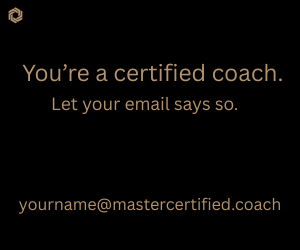As a coach, your website is the cornerstone of your online presence and an important tool for attracting clients. While web design isn’t one of the core competencies of coaching, you don’t have to be a master of web programming to craft a great coaching website. Great websites start with clarity of vision, build an authentic connection, and are driven by a carefully considered strategy — qualities your coaching expertise should give you a head start in achieving!
5 Proven Tips to Make Your Coaching Website Attract More Clients
To put you on the right, here are five tips that you can implement to attract more clients to your website and ultimately, your coaching services.
Start With a Captivating Coaching Brand
Visitors to your website should instantly get a sense of who you are, what you offer, and how you can help them. This starts with knowing who you are speaking to. While it’s tempting to try to reach everyone, the strongest brands resonate by speaking directly to a well-defined audience. Be bold and specific in defining your ideal client and then build your website with that person in mind, from the colors to the language to the layout.
Design With Purpose
Your website design should be visually appealing — not overwhelming. Focus on clean layouts and easy-to-read fonts. A branding kit can help you be consistent and professional in how you represent yourself. Be sure to include a professional headshot as well.
If you’re not a designer, it’s OK! There are many user-friendly templates and graphic design tools available online that can help you create a polished brand and apply it to your website.
Build Trust With Client Testimonials
For those new to coaching, reaching out can be a vulnerable experience. Your website is often one of the first touchpoints when someone is considering your coaching services. Including a dedicated section for testimonials is a great way to showcase your impact.
Through testimonials, past clients can share what it was like to work with you in their own words. This can help relieve prospective clients’ anxiety because it shows what they can expect from the experience.
Make it Easy to Contact You
A great contact page does exactly what it sounds like: It makes it easy for a visitor to your website to get in touch with you. This can be accomplished by sharing your email in your website footer, adding it to your About page, or by creating a contact page with a form.
And don’t forget to share other ways to connect with you, too! Make it easy to access your social media profiles so visitors who may not be ready for a coaching engagement but wants to learn more can stay connected.
Get Curious About Analytics
Once your website is live, tracking its performance can help you know what visitors respond to, and inform how you continue to build your online presence. Though the Google Analytics dashboard can be daunting at first, you don’t need to become a master of every metric it offers all at once!
To start, consider what would most help you to understand your potential clients and how to engage with them better to build client relationships. For example, which pages of your website are the most popular? What traffic sources to your visitors come from? How much time do visitors spend on your site? If you can begin to answer questions like these, you’ll be well on your way to smart growth.
Your Coaching Website Is Your First Impression Online
As you build your business and work to engage future clients, a website can be a powerful first impression. A thoughtfully developed website will offer authenticity, connection, and a well-defined brand to help prospective clients understand why you’re the right fit for them — setting you up for successful coaching relationships and a thriving business.
Disclaimer
The views and opinions expressed in guest posts featured on this blog are those of the author and do not necessarily reflect the opinions and views of the International Coach Federation (ICF). The publication of a guest post on the ICF Blog does not equate to an ICF endorsement or guarantee of the products or services provided by the author.
Additionally, for the purpose of full disclosure and as a disclaimer of liability, this content was possibly generated using the assistance of an AI program. Its contents, either in whole or in part, have been reviewed and revised by a human. Nevertheless, the reader/user is responsible for verifying the information presented and should not rely upon this article or post as providing any specific professional advice or counsel. Its contents are provided “as is,” and ICF makes no representations or warranties as to its accuracy or completeness and to the fullest extent permitted by applicable law specifically disclaims any and all liability for any damages or injuries resulting from use of or reliance thereupon.
Authors
Post Type
Blog
Audience Type
Experienced Coaches, External Coaches, New Coaches, Professional Coaches
Topic
Business Development, Marketing for Coaches
Related Posts
The Executive Coaching Blueprint: Positioning, Pricing, and Performance
Transitioning from corporate to coach can feel like uncharted territory for many…
Why Coaches Need Other Coaches
Setting the Foundation When you’re learning about the field of coaching while…
Expanding Coaching Possibilities With the Coaching Spectrum Framework™
When I discovered coaching 14 years into my career as an occupational…








